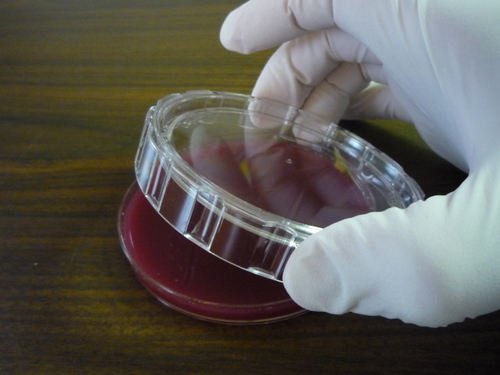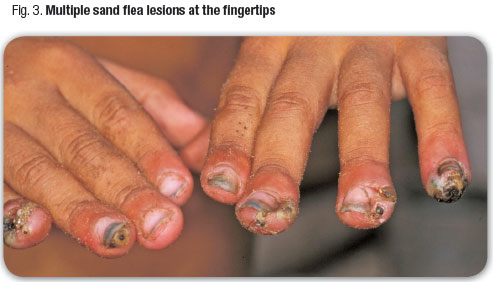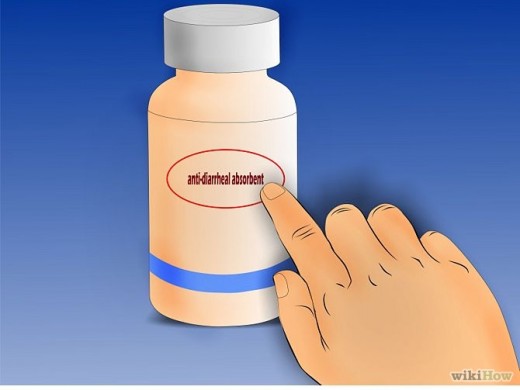Anaerobic Infections, Lesions Caused By Anaerobes And General Therapeutic principles Of Treatment
The Laboratory Isolation Of Anaerobes

Pathogenic Anaerobes To Man
Many areas in the body such as the mouth, nasopharynx, paranasal sinuses, tonsilar crypts, gastrointestinal tract, and female genital tract harbor anaerobes as commensals and they far outnumber aerobes. Anaerobes thrive in the anaerobic environment provided by the facultative anaerobes such as Enterobacteriaceae, staphylococci, streptococci, E.Coli and K.Pneumoniae which use up oxygen. They multiple further and acquire virulence if there is reduction in vascular supply, tissue injury, or presence of dead tissue. Most of the anaerobic infections are mixed. These organisms act to facilitate each other to grow, invade tissues, and resist the action of drugs. Their multiplication is promptly inhibited even by moderate increase in oxygen tension. For the isolation and identification of anaerobes, special microbiological techniques have to be adopted in collecting specimens and culturing the organisms. Since anaerobic infections produce septic venous thrombosis and embolism, pyemic abscesses are common. They liberate endotoxins from their cell walls which lead to endotoxic shock and disseminated intravascular coagulation. Anaerobes can affect all tissues, especially so, if there is tissue necrosis and presence of foreign material.
Anaerobes Which Are Pathogenic To Man
- Gram-negative bacilli:
- Bacterioides: B. fragilis, B.oralis, B. mlaninogenicus, B. corrodens
- Fusobacterium: F. nucleatum, F. varium, F. necrophorum
- Spore Gram-positive bacilli: Clostridiums: C. botulinum, C. tetani, C. perfringens, C. histolyticum, C.septicum, C. novyi, C. bifermentans
- Non-spore forming Gram-positive bacilli: Actinomyces, subacterium, bifidobacterium, propionobacterium, catenabacterium
- Anaerobic cocci:
- Gram positive: Peptococcus, peptostreptococcus, microaerophilic streptococci, anaerobic pneumococci
- Gram negative: Veillonella.
Anaerobic infections should be suspected under the following situations
- Location of lesion, in close proximity to mucosal surfaces
- Foul smelling exudates
- Presence of gas in the tissues
- Black discoloration of exudates, eg in B.melaninogenicus
- Infections associated with gut perforation and ulceration.
- Infections after human or other bites
- Aspiration Pneumonia and infections associated with the presence of foreign bodies.
Anaerobic Lesions

Infectious Diseases
Lesions Caused By Anaerobes
Central nervous system: Brain abscess, subdural empyema, septic thrombophlebitis of the cortical veins and venous sinuses.
Head and neck: Chronic sinusitis, mastoiditis, chronic otitis media, dental infection (caries), periodontal disease, Vincent’s angina, peritonsillar abscess, cervicofacial actinomycosis, and Ludwig’s angina.
Female genital tract: Endometritis, myometritis, parametritis, pyometra, pelvic cellulitis, pelvic abscesses, pelvic thrombophlebitis, vulvovaginal abscess, Bartholinitis, Skene’s gland infection, Salpingitis, tubo-ovarian abscess, vaginal cuff infection, chorioamnionitis, intrauterine or neonatal sepsis and pneumonia, septic abortion and puerperal sepsis.
Respiratory tract: Aspiration pneumonia, necrotizing pneumonia, lung abscess, empyema, mediastinitis, bronchiectasis and pulmonary actinomycosis.
Blood steam spread: Speticemia and endocarditis
Abdomen: Peritonitis, appendicitis, diverticulitis, pylephlebitis, intra-abdominal abscess, liver abscess and abdominal actinomycosis.
Soft tissues: Cellulitis, gangrene, infected deep wounds, wound infections after gastrointestinal or gynecologic surgery, infections following human bites, necrotizing fasciitis, decubitus ulcer (perineal or gluteal area), infected sebaceous or pilonidal cysts, diabetic ulcers on the feet.
Musculoskeletal: Pyogenic arthritis, osteomyelitis and gangrene.
Urinary tract: Renal abscess, perirenal abscess, pyelonephritis, wound infection after nephrectomy, cystitis, chronic prostatitis and abscess and testicular abscess.
Combined Drug Therapy

Therapeutic Principles
The polymicrobial nature of anaerobic lesions demand the use of antibiotic combinations active against anaerobes and aerobes.
Surgical measures should be employed in time and these are most important. These consist of drainage of abscesses, debridement of necrotic tissue, and relief of obstruction to natural passages.
Penicillin is effective against all anaerobes except Bacterioides fragilis and it is the drug of choice. It has to be given in the drug of choice. It has to be given in very high doses (20 to 30 mega units in 24 hours). Gentamycin, clindamycin and chloramphenicol act synergistically with penicillin against anaerobes and therefore these antibiotics are combined for therapy. When the organisms are resistant to penicillin, these antibiotics are used as the primary drugs. Betalactamase- resistant cephalosporins- cephoxitin and cephamandole- are also effective. Metronidazole, given intravenously in a dose of 500 mg, 8 hourly as infusion is a useful drug against many of the anaerobes. It has to be combined with other antibiotics. Oral doses are effective to a lesser degree.
Other measures include the administration of antitoxins, hyperbaric oxygen, local oxygen therapy and use of oxidizing agents locally, eg, hydrogen peroxide.
© 2014 Funom Theophilus Makama




